The combination of Toronto’s modern and historical architecture creates an urban landscape that is widely unmatched and unique to the city. Because of the continued growth of the city and it’s needs, Toronto was in a constant state of change, tearing down anything in hindering new development. Thirty years ago, the City of Toronto decided to preserve older buildings by beginning to build around or onto structures deemed to be important historical sites. The collaboration of old and new was a result of this policy, creating a modern and hybridized architecture.
This series highlights the hybrid style of architecture that is prominent in Toronto. The buildings in this series range from the 1880s to the present day, and from Victorian architecture to Brutalist buildings. By having the buildings be the only objects present in the images, a closer and more in-depth look at the harmony between old and new can be observed. The buildings within this project are of importance, and display Toronto’s power in the finances, arts, schooling, and consumerism focusing on incorporation of new architecture among old university buildings, shopping centres, banks and theatres. The hybridization of new and old architecture ensures that the history of Toronto will not be torn down and forgotten, but rather be integrated into both present and future development of the city.

College Park, College Street.
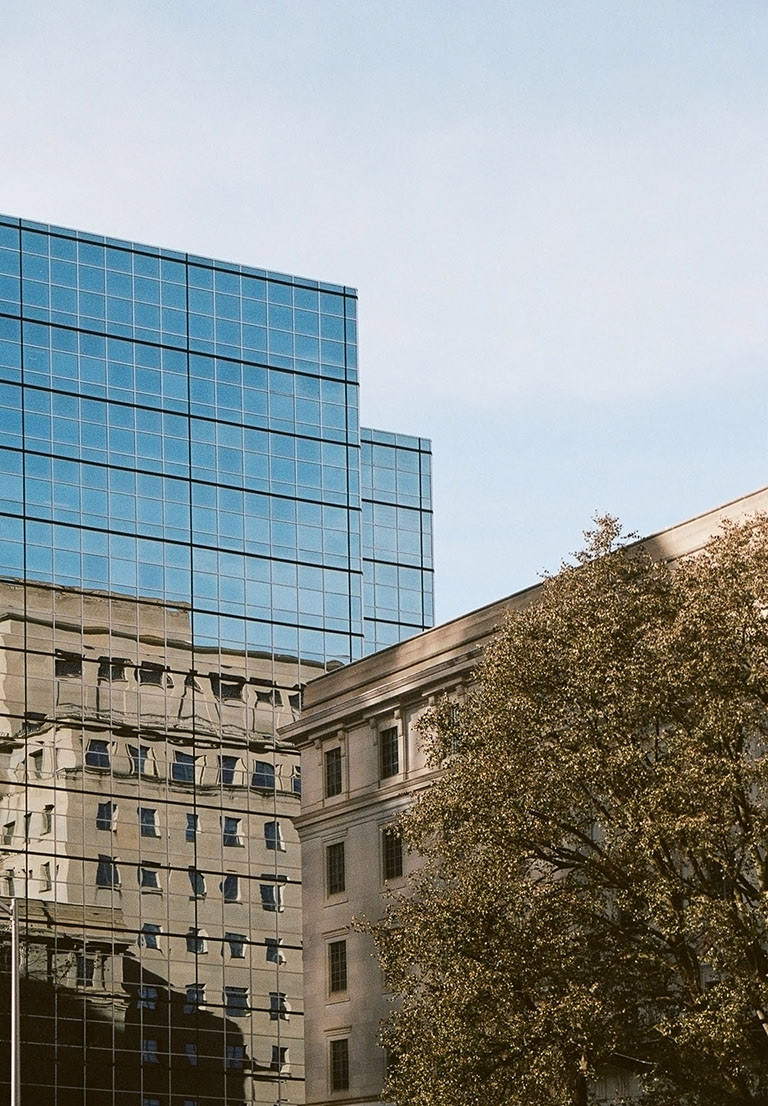
Manulife Building, Bloor Street.

Manulife Building, Bloor Street.
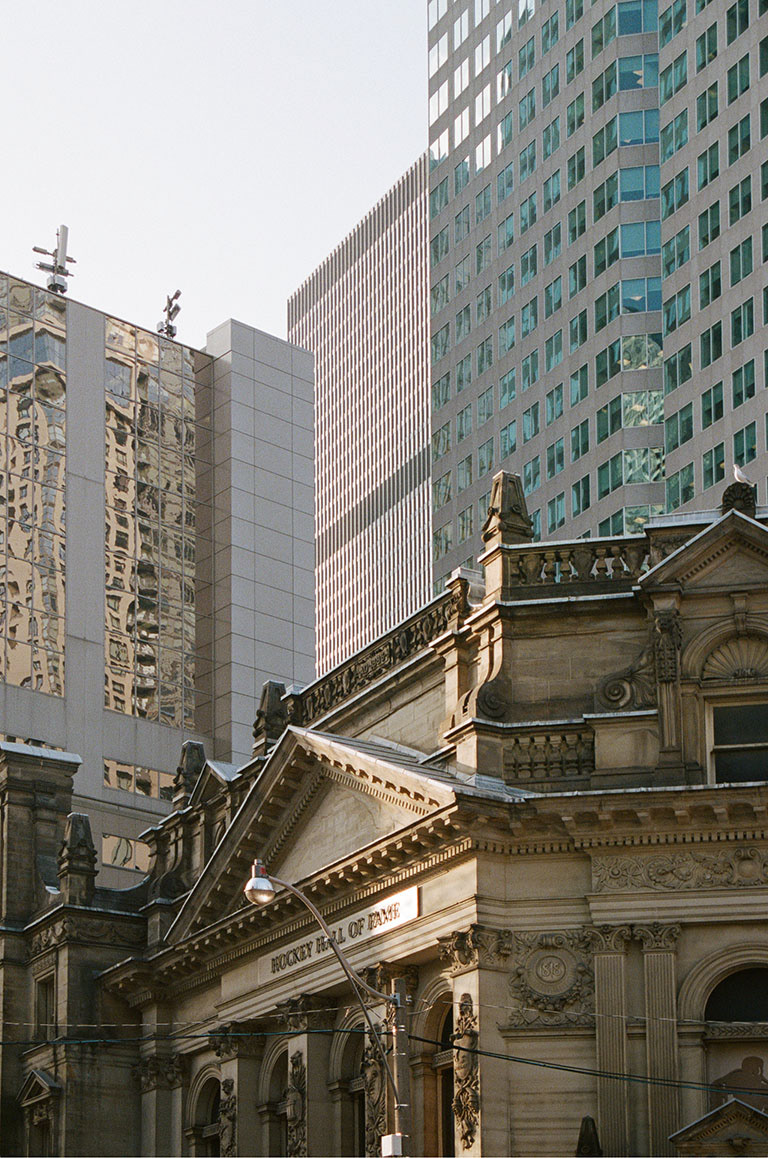
Hockey Hall of Fame, Front Street.
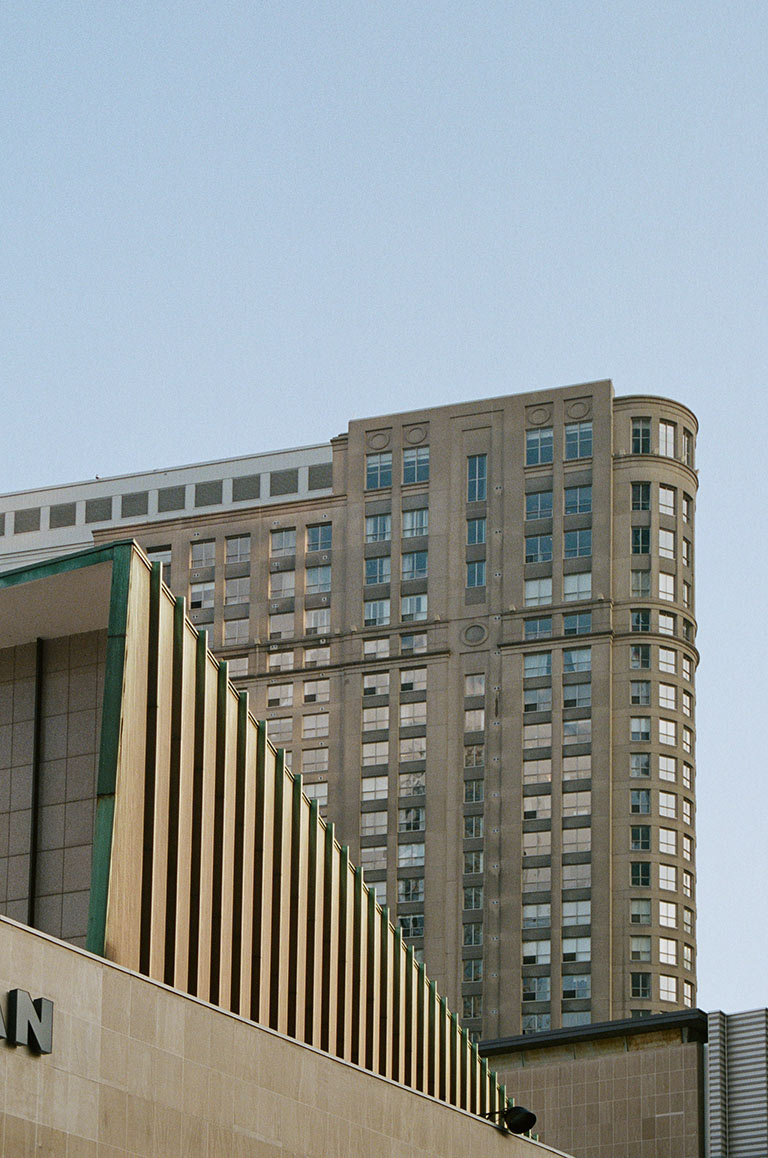
Meridian Hall, Front Street.
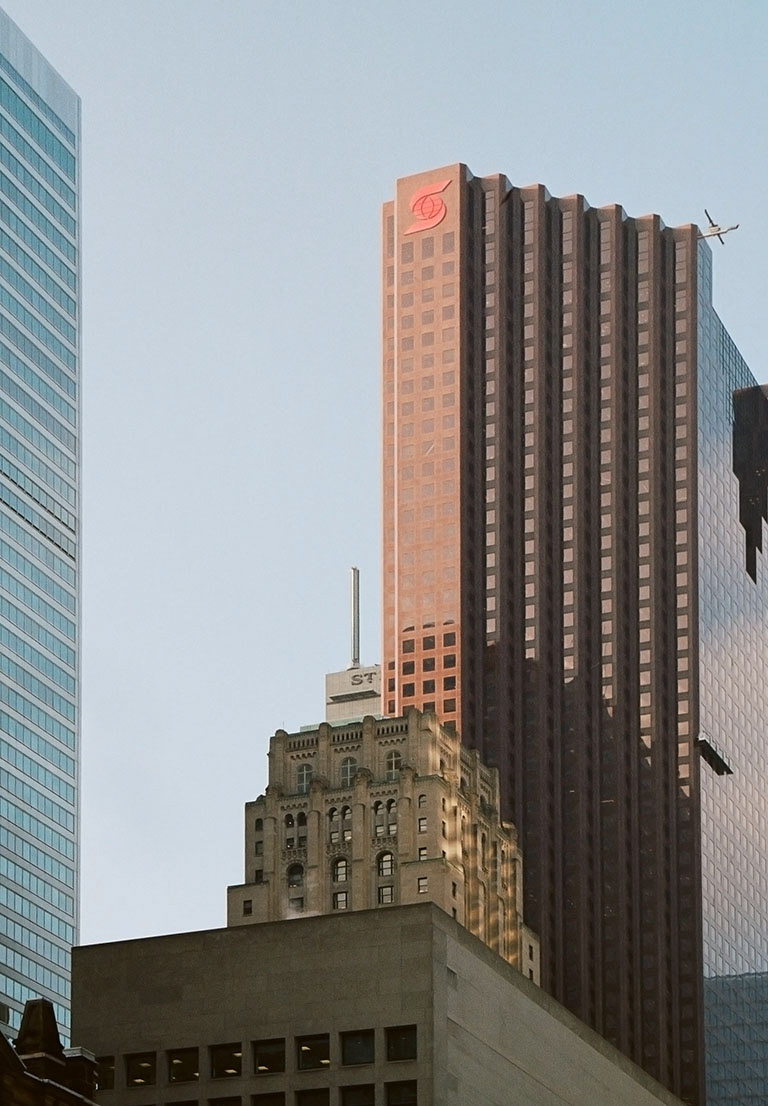
Soctia Plaza, Yonge Street.
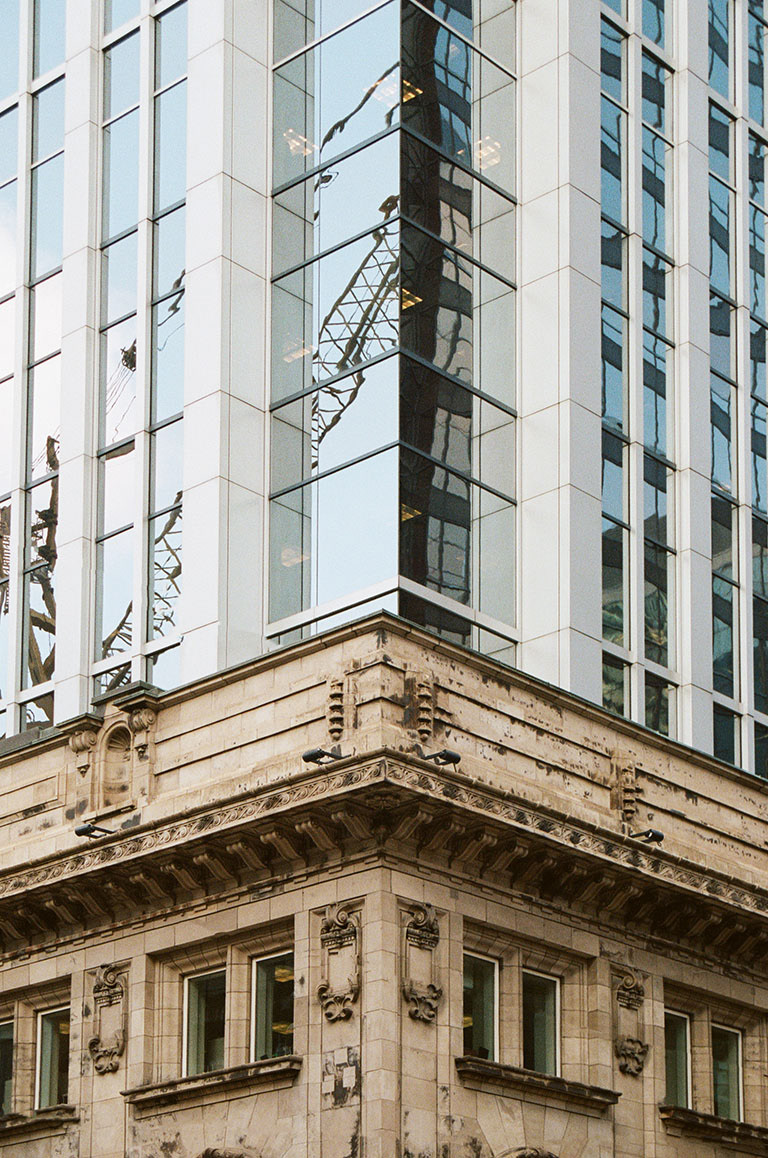
Yonge Street.

Hyatt Hotel, King Street.

University of Toronto, College Street.


